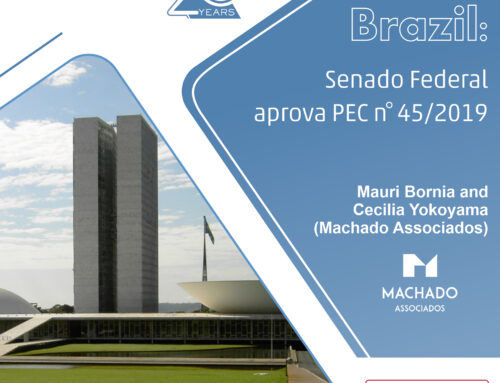Peru: Securitisation 2022
The Peruvian economy has faced a rebound across the different sectors and activities. In contrast to the year 2020, during which the Peruvian GDP experienced a 13.0% downfall, a 12% positive rebound is expected for the year 2021. The securitisation structure has become a useful tool in reducing (at least partially) the risks which are inherent in all financing structures.
Among the main developments in securitisation trends and practices for the year 2021 are the development of opportunities to carry out asset-securitisation processes, given the economic effects of the COVID-19 pandemic, at the pinnacle of the COVID-19 crisis, the adoption by the Peruvian government of securitisation programmes created to serve as a guarantee to safeguard the stability of the economy, the growth of local REITs (Real Estate Investment Trust – FIBRA by its acronym in Spanish), and the initiative to develop a secondary market for low-income housing by the Peruvian Housing Development Bank (Fondo MIVIVIENDA).
Regulatory Modifications
Restrictions on REIT and REIF investments
On 4 June 2021, Resolution No 01657-2021, approved by the Peruvian Banking Authority (SBS by its acronym in Spanish), was published in the Official Gazette. This resolution modified and amended Article 170 of Title VI of the Banking Authority Compendium of Private Pension Fund Regulations, approved by Resolution No 052-98-EF/SAFP.
Under the Resolution, the Banking Authority clarifies that, in accordance with Article 25-B of the Private Pension Fund Law, Class 1 Funds (this is the most conservative type of Pension Fund in terms of investment risks, pursuant to applicable law) may not invest in REITs or REIFs (Real Estate Investment Funds – FIRBI by its acronym in Spanish).
The foregoing is especially relevant, as there are over PEN19.2 billion (USD4.8 billion, approximately) of deposits held under Class 1 Funds in individual capitalisation accounts in the Peruvian private pension fund system.
This restriction, while not significantly detrimental to the availability of raising capital regarding REITS and REIFs, limits a source of funding from Peru’s largest institutional investors (the private pension funds), as they will only be able to invest in REITs and REIFs through other types of funds (ie, through other investment funds).
Collateral to secure the issuance of securities
On 4 December 2021, Resolution No 124-2021-SMV/02 was published in the Official Gazette. The regulation aims to exempt the requirement of the registration of the collateral (which may take up to five weeks) as a condition precedent for the launching of a private offering of securities. This exemption will remain in force until 31 December 2022. The resolution states that, regarding securities that are to be placed through public offerings without a prior registration of collateral to back their issuance, the following regulations shall be applicable:
- regarding disclosure: for cases where collateral for the issuances has yet to be registered, any such information must be disclosed to investors clearly, in detail and in a sufficient manner in the risk-factors section of the corresponding prospectuses, as well as the consequences that will result in the event that the collateral is not eventually registered;
- regarding the term in which to obtain the corresponding registration: the issuer must commit to register the collateral within 180 calendar days after the first issuance. This commitment shall be included as a schedule of the prospectus. This term may be increased by a majority of bond-holders and any such decision must be notified to all the other bond-holders;
- the requirement to obtain express consent in purchase orders: purchase orders must necessarily include, expressly, that subscribers or purchasers of the securities are aware, know, and consent to the fact that the collateral has yet to be registered and accept the associated risk regarding that situation;
- the option to disclose risk factors, warnings and disclaimers: the additional relevant information which the issuer determines should be disclosed must be revealed in the prospectus in a timely manner;
- post-placement information regarding registration of the collateral: the issuer must disclose a material event (hecho de Importancia) once the collateral has been registered and submit the corresponding evidence of that registration to the Peruvian public registry.
Notwithstanding the corresponding legal actions that may be filed against the issuer, its directors and managers, non-compliance of the issuer to register the collateral shall, additionally, carry the following consequences:
- a default event will be considered to have occurred and with it all the consequences provided for in the master agreement, with the obligation to convene a bond-holder’s assembly;
- the issuer shall report each month, as a material event, any non-compliance of the registration of the collateral, stating the value of the amount of securities issued and information regarding the collateral that has yet to be registered.
The above-mentioned consequences will not be applicable if the bond-holders agree to extend the term to register the collateral. In no case shall the issuer be able to extend for more than one year the term to register the collateral, counted from the date in which the securities are placed, unless there is unanimous agreement between all the bond-holders.
Regarding the placement of securities through primary public offerings without having previously registered collateral in the Peruvian public registry, regulated under the Capital Markets Superintendency (SMV) Resolution No 021-2013-SMV/01 (which applies to the market of Institutional Investors), the following regulations shall be applicable:
- regarding disclosure: for cases where collateral for the issuances has yet to be registered, any such information must be disclosed to investors clearly, in detail and in a sufficient manner, in the risk-factors section of the corresponding prospectuses, as well as the consequences that will result in the event that the collateral is not eventually registered;
- regarding optional commitments with respect to the corresponding registration of collateral, the issuer must clearly state whether it will commit itself to registering the collateral eventually or whether that collateral will not be registered at all;
- the requirement to obtain express consent in purchase orders: purchase orders must necessarily include, expressly, that subscribers or purchasers of the securities are aware of, and know, and consent to the fact that the collateral has yet to be registered and accept the associated risk attached to that situation;
- the option to disclose risk factors, warnings and disclaimers: the additional relevant information, that the issuer determines should be disclosed, must be revealed in the prospectus in a timely manner;
- fiduciary and administrative responsibilities: notwithstanding the corresponding legal actions that may be filed against the issuer, its directors and managers, non-compliance of the issuer to register the collateral will cause a default event to be considered to have occurred and with it all the consequences provided for in the master agreement, which includes the obligation to convene a bond-holder’s assembly. Such a consequence may be avoided if the assembly of bond-holders (i) agrees to extend the term to register the collateral, if the issuer does not comply with the extended term, or (ii) agrees to waive the obligation of the issuer to register the collateral;
- post-placement information regarding registration of the collateral: the issuer must disclose this as relevant information (información eventual) once the collateral has been registered and must submit the corresponding evidence of that registration in the Peruvian public registry.
The securities’ regulator has on its agenda the task of creating a similar applicable framework for securitisation. At the present time, the requirements set forth previously are supplementary. Nevertheless, the enactment of these regulations for securitisation bonds is a pending and necessary task.
Research of judicial precedents
No judicial precedents exist.
Other taxes
There are no other taxes.
Market Developments
Comparison between the amount of offers registered with the SMV in 2019, 2020 and 2021
In 2019, securitisation bonds amounting to PEN230 million were placed through primary public offerings, and in 2020 there were no securitisation bonds placed through primary public offerings. Similarly, as of October 2021, no securitisation bonds have been placed through primary public offerings.
However, the foregoing does not mean that the market is stagnant. The private placement of securitisation bonds/certificates is not made public and publicly disclosed filings of existing REITs show that the securitisation market remains profitable.
Further, even though new issuances have not occurred through public primary offerings in the past two years, as of October 2021, the Peruvian market has over USD430 million in placed securities, issued through securitisation structures, through primary public offerings.
Comments on leading cases
The first and main regulated REIT in Peru has a USD500 million framework programme registered before the SMV. A total of USD70 million of securitisation bonds backed up by the trust has been placed in the market and over USD20 million in additional financing has been obtained by that trust. For the year 2022, it projects a return on distribution of 7.5% to 9.5%.
However, on 27 November 2020, the SMV registered the largest programme in the history of the Peruvian securities market for up to USD2 billion with respect to a REIT. That REIT has not yet had a publicly disclosed placement of securities.
Comments about the development of private offers
Although, as a general rule, private offerings of securities are outside the scope of supervision of the SMV, according to Article 333 of the Securities Market Law (LMV in Spanish), private offerings of securitised instruments may only be offered to institutional investors. Similarly, the securities acquired by these investors may not be transferred to third parties, unless this is done in favour of another institutional investor, or the security has previously been registered before the Public Registry of the Securities Market.
According to the Income Tax Law, in cases of securitisation carried out through REITs, it is the investor who must pay the tax, not the trust itself. In this respect, the rates that the law has established have been quite attractive for the market: 5% for individuals, 29.5% for companies and 0% for institutional investors (which are listed in Resolution SMV No 021-2013-SMV-01). The preferential rate for institutional investors serves as an incentive to structure financing schemes through securitisation programmes aimed at institutional investors.
In addition, the average approval of a public offering usually takes approximately 30 business days and the registration of securities entails the obligation periodically to disclose information as a material event (hecho de Importancia). Such additional costs and obligations to disclose information on a periodic basis have in certain cases led companies to opt for securitisation schemes through private offerings.
Reactiva Peru
Description of the programme through the securitisation scheme
The Peruvian declaration of emergency and mandatory social distancing has generated a negative impact on the local economy, decreasing spending and affecting the income of Peruvian companies. With this in mind, to protect the payment chain, the Peruvian government approved a guarantee programme, named REACTIVA Peru, to provide working capital for up to PEN60 billion, through Legislative Decree 1455. This programme has two financing forms: individual guarantee and portfolio guarantee, the latter being a securitisation trust which facilitates the granting of national government guarantees.
The programme allows companies in the financial system (ESF by its acronym in Spanish) (with their own funding) to choose to provide working capital loans to those companies that meet the programme’s eligibility requirements. In turn, the ESFs enter into a guarantee agreement with Corporación Financiera de Desarrollo (a Peruvian state-owned development bank – COFIDE by its acronym in Spanish) which establishes the terms for granting the national government’s guarantee to the loans placed by the ESFs, which will be transferred to a securitisation trust to be administered by COFIDE as trustee and securitisation company and whose trustee is the Ministry of Economy and Finance.
In that respect, the ESFs transfer to the trust the credit portfolios they have placed under the programme. In consideration for the transfer of the loan portfolio, two certificates of participation of the Trust are issued: (i) for the percentage covered and (ii) for the balance of the portfolio without additional guarantees.
The guarantees of the programme only serve as a back-up for as long as they are used, exclusively, in operations of the Central Reserve Bank of Peru (BCRP by its acronym in Spanish).
Why securitisation is the ideal mechanism (security for autonomous assets, feasibility of issuing participation certificates in favour of banks and the government)
Securitisation is an ideal mechanism for the guarantee programme because it allows ESFs to obtain greater immediate cash-flow by being able to trade the certificates issued that are backed by the government.
Likewise, even though the financial entity granted the loan portfolio in a pass-through capacity, it will continue to be in charge of collecting payments from the loans and the companies that have obtained the loans from the ESFs, under the terms and conditions agreed upon.
COFIDE’s involvement and regulatory changes that allow it to be a trustee
Given that the SMV is the authorised regulator for securitisation companies, by means of Superintendent’s Resolution No 00041-2020-SMV/02, provisions were approved so that COFIDE may act as a securitisation company in the guarantee programme of REACTIVA Peru and in the National Government’s Guarantee Programme for the Credit Portfolio of the Companies of the Financial System under Legislative Decree No 1508.
Future Market Trends: What Is Expected
Securitisations to restructure debts
Companies have been using securitisation structures to improve the management of their liabilities. A good example is that of a group of Peruvian schools that in October of 2020 placed a second issue of social bonds through a private offering under its First Securitised Bond Programme for an amount of USD17 million and a term of 15 years, thereby redeeming and cancelling securitisation bonds which were outstanding and issued in 2014.
It is worth highlighting the particularity of this case, because it was not only a securitisation process, but also a securitisation process with the issuance of thematic (social) bonds certified by an independent verifier, which has been increasing in the local market in recent years.
Securitisation for the Peruvian Housing Development Bank (Fondo MIVIVIENDA)
There is an initiative to develop a secondary market for low-income housing by the Peruvian Housing Development Bank (Fondo MIVIVIENDA) loans. In the Peruvian market, securitisation trusts can help provide cash-flow to Fondo MIVIVIENDA, as local regulation offers legal instruments to bolster the secondary trade of mortgages. At the present time, the housing market faces a lack of liquidity.
Securitisation for small- and medium-sized enterprises (SMEs)
In the Peruvian market, securitisation trusts can help provide cash-flow to SMEs, as local regulation does not limit their use only to originator companies with large-scale assets. The current lack of liquidity of local companies and the increased risk aversion of banks create an ideal space for SMEs to seek new financing schemes that allow them to obtain liquidity in the short term.
In this sense, the structuring costs that usually accompany this type of issuances have been reduced in the market as financing structures have been standardised and negotiation costs have been reduced. In recent months, the securitisation companies have been promoting the demystification of the theory that asset securitisation implies higher costs (in terms of expenses and time) than those in traditional financing schemes, especially in the case of private offerings.
Writers: Andrés Kuan-Veng and Carlos Arata, from Rubio Leguía Normand
Original: https://practiceguides.chambers.com/practice-guides/securitisation-2022/peru/trends-and-developments





